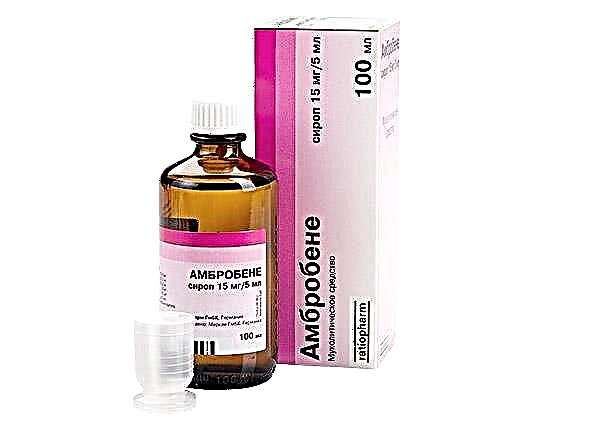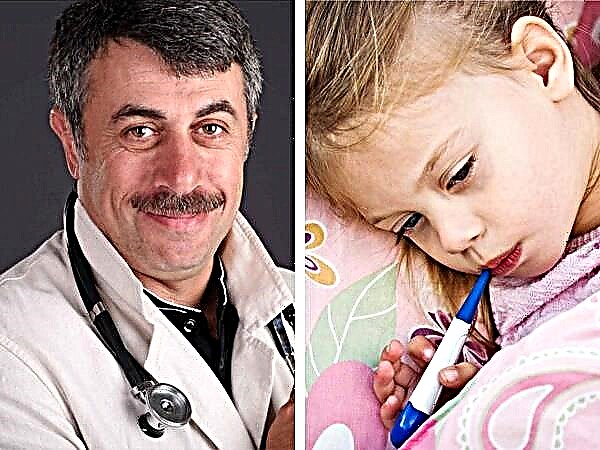Heart disease is one of the most common birth defects. In Russia, about 10 thousand babies with heart defects are born every year. In each of these cases, surgery is required. It is assumed that the incidence of the disease is due to the early and intensive development of the heart and blood vessels in the first weeks of fetal formation. What is heart disease in newborns? What are the types of pathology? How is the disease treated? This article will tell you about it.

Heart disease in a newborn - a common birth defect
Why does congenital heart disease (CHD) occur?
The factors that can lead to the development of heart disease in an unborn baby are quite numerous. At the same time, it is impossible to say for sure why a particular baby's heart began to form incorrectly during intrauterine development. Scientists name a number of risk factors for CHD in a newborn.
Among the reasons that can lead to anomalies in the development of the heart in an infant in the womb are:
- Chromosomal abnormality, for example, Down syndrome, Edwards, Patau syndrome.
- Lack of folic acid (aka vitamin B9).
On a note. Taking folic acid in the first months of pregnancy reduces the likelihood of CHD formation by almost 30%.
- Diseases that a woman suffered while carrying a child. There are a number of pathologies that can form a heart defect in an unborn baby. These include uncorrected phenylketonuria, diabetes mellitus, infections, obesity, and epilepsy.
On a note. Gestational diabetes (occurs only during the gestation period) does not increase the risk of a baby's heart defect.
- Taking medications. This group includes thalidomide, retinoids, fluconazole, lithium preparations, metronidazole, hormonal drugs, anticonvulsants, and more.
- Bad habits (smoking, alcohol, drugs).
- The negative influence of environmental factors, for example, pesticides, dyes, ionizing radiation.
- Age of mother (over 35), father (over 45).
- The presence of miscarriages, premature birth.
- The stress that a pregnant woman experienced in the first trimester.
- Weighed down heredity. If the mother was diagnosed with congenital heart disease at birth, then the child is 3 times more likely to form a similar defect.
- Closely related marriages.
- Multiple pregnancy.
- Complicated pregnancy, in particular, preeclampsia (disruption of the placenta vessels).
- Rubella. For this reason, doctors advise women planning a pregnancy to get vaccinated against rubella first.
On a note. Research into the effect of preeclampsia on the formation of CHD in a child is still ongoing.
Development mechanism
The heart consists of 4 hollow chambers (2 on the right and left sides), which are connected by a solid septum. In the process of pumping blood, the heart uses 2 left chambers for some tasks, 2 right chambers for others. The right side is responsible for the movement of venous blood through the vessels to the lungs, where it is saturated with oxygen. Then the fluid returns to the left chambers of the heart through the pulmonary veins. The left side of the organ directs arterial blood through the aorta to the rest of the tissues and organs.

The structure of the human heart
The parts of the heart (upper (atria) and lower (ventricles)) communicate with each other through a septum, which has holes. The latter are closed by flap valves. The valves allow blood to pass only in one direction - from the atrium to the ventricle (but not back).
During the first 6 weeks of pregnancy, the formation of the cardiovascular system takes place. The most important is the 5th week of pregnancy, when the heart is divided into sections, septa and valves are formed. At this time, the arterial trunk divides into the pulmonary artery and the aorta. At 6-7 weeks, the construction of the interventricular septum is completed. It is during this period that various anomalies and defects in the development of the heart can occur. Under the influence of negative factors, the cardiac septum may not form correctly, then there will be a risk of mixing arterial and venous blood. Other disorders may also occur, leading to congenital heart defects.

Congenital heart disease
Classification
There are many types of congenital heart defects. For the purpose of classification, they are divided into groups:
- Holes in the heart. Formed in the walls that separate the heart chambers. Also appear between the blood vessels leaving the heart. As a result, oxygenated blood mixes with venous blood (contains a large amount of carbon dioxide). This leads to oxygen starvation of all organs and tissues. Varieties:
- Septal defects. The wall dividing the heart chambers is no longer continuous.
- Patent ductus arteriosus. The valve between the pulmonary artery (carrying venous blood) and the aorta (through which oxygen-rich blood flows) does not close in time;
- Open atrioventricular canal (anomaly of the atrioventricular septum) - an opening forms in the central part of the heart.
- Obstruction of blood flow. The vessels or valves are narrowed due to CHD, and the heart muscle is forced to push blood through them with more force. Varieties:
- Pulmonary artery stenosis. Too narrow valve through which blood from the right ventricle enters the pulmonary artery and further along it into the lungs;
- Aortic valve stenosis. A valve that is too narrow, through which blood leaves the left ventricle and enters the aorta, and then oxygenates the entire body.
On a note. As the heart pumps in an increased mode, thickening and expansion of the heart muscle gradually occurs.
- Abnormal blood vessels. The deviation lies in the wrong location of the vessels, changes in their structure:
- Transposition of the great vessels. The aorta and pulmonary arteries are reversed;
- Coarctation of the aorta. The largest vessel in the body is significantly narrowed. This leads to a strong overload of the heart muscle and an increase in blood pressure.
- Total anomaly of the connection of the pulmonary veins. With this defect, the vessels flow into the wrong part of the heart (instead of the left atrium into the right one).
- Valve anomaly. The function of opening and closing valves is impaired.
- Underdevelopment of the heart.
- The presence of several defects at the same time.
Common symptoms of CHD
Severe CHD is almost always easily detected immediately after birth or during the first months of life. The clinical picture of the disease may include the following signs:
- Cyanosis;
- Rapid breathing;
- Heavy breathing, grunting, distended nostrils;
- Swelling of the limbs, the appearance of edema around the eyes, on the abdomen;
- Shortness of breath during lactation.
Mild forms of CHD can go unnoticed for many years, as they do not have pronounced symptoms. At an older age, CHD in children includes the following symptoms:
- Shortness of breath during physical exertion;
- Fatigue during exercise;
- Swelling of the limbs.

CHD symptoms
Symptoms Noticeable at Home
Signs of CHD that are obvious for parents, which are easy to determine in a child at home, are:
- Blueness of the skin;
- Swelling of the hands, nok;
- Rapid or labored breathing.
Laboratory diagnostics
Often, CHD is found in children during a routine medical examination - a heart murmur that occurs with defects in an organ or blood vessels is heard through a stethoscope.
On a note. Most heart murmurs are not dangerous symptoms (not due to CHD).
If, after examination by a doctor, there are suspicions of a congenital heart defect, the baby is prescribed certain tests, analyzes, in particular:
- Echocardiography. The study is based on the use of ultrasonic waves;
- Electrocardiogram. Fixes the electrical activity of the heart;
- Chest X-ray. Helps to detect an enlarged heart, the presence of fluid in the lungs;
- Pulse oximetry. The test allows you to establish the level of oxygen in the blood;
- Cardiac catheterization. Invasive manipulation, during which a catheter (2 mm in diameter) is inserted into a large vessel (in the groin area) and moved up through the vessels - to the heart.

Baby electrocardiogram
The consequences of pathology
CHD can lead to complications such as:
- Chronic heart failure;
- Arrhythmia;
- Cyanosis;
- Stroke;
- Slowdown in physical development;
- The need for lifelong observation by doctors.
Treatment methods
The least severe forms of CHD most often do not carry serious risks to the baby's life, in some cases they do not require treatment at all (for example, small holes in the intracardiac walls, which can heal with age).
Severe heart defects are life-threatening for the child, so urgent treatment is needed in such cases. The nature of therapy depends on the type of CHD. You can treat heart defects in the following ways:
- Catheterization. An invasive method that excludes opening the chest and heart. When the catheter reaches the site of the defect, microinstruments are inserted through it into the heart. With their help, the doctor closes the opening or expands the area of narrowing of the vessel.
- Operation. It is carried out in cases where the previous method turns out to be useless. During the operation, the work of the heart stops, and blood flow is carried out by a heart-lung machine.
On a note. In most cases, a child with CHD requires open heart surgery.
- Heart transplant.
- Drug therapy. It is prescribed for non-severe congenital heart disease.
- Angiotensin converting enzyme inhibitors. Reduces stress on the heart.
Forecast
Many people with uncomplicated CHD live without major problems. In others, the development of pathology can be observed with age. Patients who have genetic abnormalities increase the likelihood of disability and even death.
Important! In most cases, the disease is not completely eliminated - you need to be observed by doctors and you need to be treated all your life.
General recommendations of doctors
Doctors advise to carry out the prevention of CHD. The following measures will help reduce the risk of developing the disease in a child:
- Timely rubella vaccination;
- Treatment of chronic diseases;
- Avoiding contact with harmful substances;
- Rejection of bad habits;
- Try not to be in places, not to attend events that can cause stress;
- Taking medications containing folic acid.
If the child has undergone open heart surgery, then after discharge, you need to adhere to the following rules:
- Do not load the upper shoulder girdle for 6 weeks;
- Do not swim until the crusts at the scar has fallen off;
- In the first year, the scar should be hidden under clothing to protect it from exposure to sunlight;
- Carry out the prevention of infective endocarditis;
- Not vaccinated for several months.
The factors that increase the risk of neonatal heart disease are numerous. Many of them can be controlled, but it is impossible to predict for sure whether a baby will be born healthy. Modern medicine makes it possible to identify defects during pregnancy using ultrasound. Fortunately, even severe heart defects can be corrected, thanks to which more and more children survive, and their quality of life also improves.



